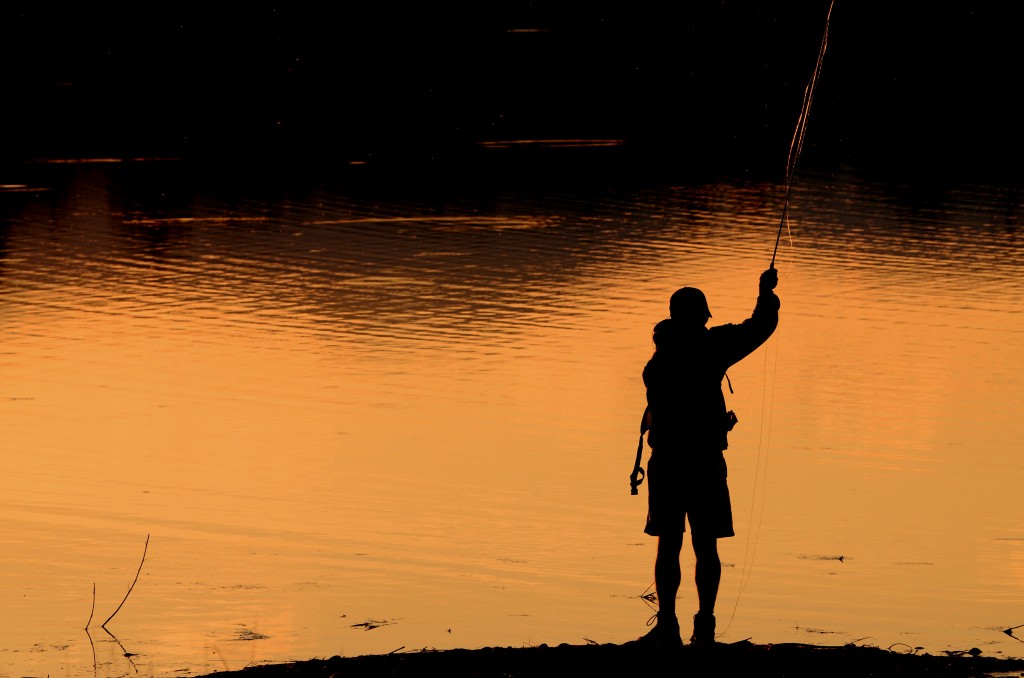Did you know that Colorado and the Rocky Mountains are home to some 35 different species of fish? With over 6,000 miles of streams and more than 2,000 lakes and reservoirs, we are lucky to have so many opportunities for both warmwater and cold water fishing.
Here in Boulder County, I think some of the best fishing is for bass. Pella Crossing, Walden Ponds Wildlife Habitat, Lagerman Reservoir and Stearns Lake are only some of the fishing holes open to the public. Each has its own fishing regulations and catch limit, so make sure to check requirements before you head out.
Largemouth bass are the dominant species of warmwater fish here on the Front Range of Colorado and some surrounding areas. Also known as bucket mouths, largemouth bass gets its name from the long jaw which extends past the eye, allowing the fish to engulf large portions of food, like frogs or crawfish. Largemouth can exceed 10 pounds if the habitat is good. This is the one fish that you’ll find in most warmwater lakes in Colorado. These fish were among the first introduced species into Colorado back in 1878. Largemouth bass are distinguished by their horizontal strip through the center of their body sides. Whereas, smallmouth bass have vertical lines on their sides and can have a red tint to their eyes.
Bait Choices
When shopping for bait, buy both colorful and natural colors. Bright colors will be a big help when fishing since bright colors shine through the murky water and cloudy days. Whereas clear water and sunny days, natural colors look best.
While there is a wide variety of live bait available for bass fishing, let’s look at the two basic artificial baits. Largemouth bass are very aggressive naturally which means that you don’t always have to play the patience game like you might with trout. A great beginner and reliable lure for bass fishing is the spinnerbait. This is a “V” shaped spinning lure that has a plastic “skirt” around the hook end. The spinning of the blade and the color of the skirt are the big attracters to bass and their short temper. This is always a great one to turn to because bass love them.
Plastic worms are another great artificial lure for fishing. Plastic worms come in handy for properties that do not allow live bait. They hold one big advantage over real worms — a variety of color. Artificial worms come in all sorts of shapes, sizes and colors. With any lure, including worms, just because they are not working doesn’t mean a fish won’t eat anything at all. A color change can be very valuable. Plastic worms are a great starter worm which work best with the large worm hooks. These worms are nice because you can work them in different ways, with weight or just by themselves. I suggest learning a basic Texas worm rig for rigging a worm on the oversized large worm hooks. These work great for getting around grasses, shrubs and trees in the water.
Fishing Tips
Fishing practices can vary widely from angler to angler , and some may not work for you. You are the best judge of what works.
The strategy when casting into the waters for bass is coverage. If you are fishing in areas with objects in the water, natural or not, cast as close as you can to those objects. Bass enjoy the coverage like other fish and animals.
Also, just because a fish doesn’t hit on the first cast doesn’t mean they are not there, so give it multiple shots. Fishing in and near objects can be tough, you may lose lures to trees and rocks, but the benefit can be great.
The time of year and weather conditions are important to consider when fishing on open water and shallow waters. If too cold, the bass won’t be active. Ideally, you’ll want the water to be 65 to 75 degrees. Higher temperatures slow down activity due to lower oxygen levels and a few other factors. What does this add up to? Bass can travel into the more shallow waters when heat is needed and travel to the deeps when desired.
Largemouth bass do not travel in large schools together but at times there are favored locations in a lake or reservoir in which they will gather. This is where it can be worth staying in a location for a while because you never know how many other fish are around.
Trust your instinct and have fun. Ultimately that gives us the best luck when fishing. Remember why we all enjoy it — watching the sun rise or the sun set next to the water, feeling the breeze across your face. A bad day fishing is still better than a good day at work!

